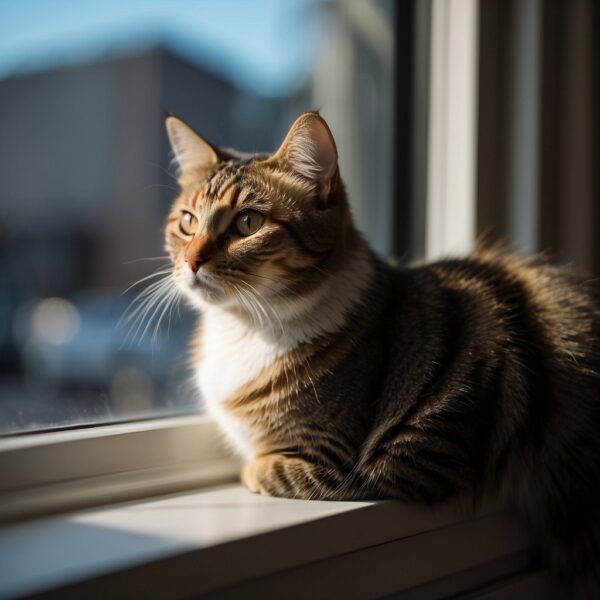
Decoding Feline Thoughts and Behaviors
Deciphering the inner workings of a cat’s mind is as intriguing as it is complex. Cats, with their often inscrutable expressions and independent behaviors, have puzzled pet guardians and scientists alike. While much about feline cognition remains mysterious, research into feline behavior has provided insights into their memory, perception, emotions, and social cues. Cats do not merely live life on instinct; they exhibit a wide range of emotions and engage in deliberate actions based on complex thinking and problem-solving abilities.
Communication between humans and cats is nuanced and multifaceted. Just as felines communicate with each other through body language, vocalizations, and behavior, they also use these methods to interact with humans. It appears that cats understand us in their own way, forming unique social bonds. The dynamics of human-cat relationships are reflective of the feline’s social structure and interactions, further evidence of their cognitive abilities. Observing and interpreting a cat’s daily behavior can give us glimpses into what they might be thinking, feeling, and how they perceive their environment.
Key Takeaways
- Research indicates that cats have complex cognitive abilities and emotions.
- Cats communicate with humans and other felines through nuanced behaviors and social cues.
- Observing cat behavior can offer insights into their thoughts and feelings.
Understanding Cat Cognition
Exploring the intricacies of feline intelligence reveals the sophisticated ways in which cats perceive and interact with their environment.
Cat Intelligence and Neurons
Recent research from the University of Bristol has shed light on the neural capabilities of cats, exhibiting the complexity of their cognitive functions. Cats possess a significant number of neurons within their cerebral cortex, the area of the brain responsible for decision-making and problem-solving. This neuronal density is indicative of their ability to process information and suggests a level of intelligence.
Memory and Learning
Cats demonstrate a notable capacity for memory and learning which is observed in their ability to navigate their environment and adapt to new situations. Studies highlight that cats remember where food is kept and can manipulate objects to receive a reward, indicating their learning abilities extend beyond simple conditioning.
Sensory Perception and Cat Sense
The feline approach to the world is largely governed by their sensory perception. Cats rely heavily on their acute senses to interpret their surroundings. With advanced hearing, keen eyesight, and sensitive whiskers to detect minute changes in their environment, felines are well-equipped to navigate their world. A profound sense of smell further allows them to communicate and understand chemical signals within their territory.
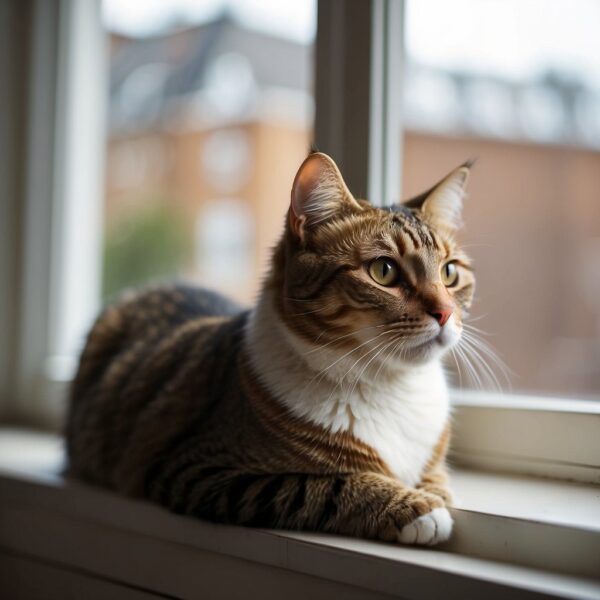
The Emotional World of Cats
Cats possess a complex emotional landscape, demonstrating a range of feelings from affection to anger. They are capable of forming deep bonds with humans and exhibit diverse reactions to different emotional stimuli.
Interpreting Cat Emotions
Cats communicate emotions through a combination of verbal cues and body language. Affection is often shown by purring, head-butting, and kneading, while flattened ears and hissing signify anger or fear. Recognizing these signs helps humans understand their feline companions on a deeper level.
- Affection: Purring, head-butting, kneading
- Anger: Hissing, growling, swatting
- Fear: Flattened ears, arched back, bushy tail
Emotions Towards Humans and Other Animals
Cats exhibit varied emotions towards humans and other animals. They can form emotional bonds, displaying affection towards their guardians. Cats may also feel jealousy towards other pets, often indicated by behavioral changes such as aggression or withdrawal.
- Affection: Following people, rubbing against them
- Jealousy: Aggression toward other pets, possessiveness
Expression of Fear and Jealousy
Fear in cats can lead to either aggressive reactions or attempts to flee and hide. On the other hand, jealousy may cause cats to act out or show subtle signs of discomfort, like avoiding interaction or over-grooming.
- Fear: Escape behavior, aggression
- Jealousy: Changes in behavior, avoidance
Social Structure and Interactions
Cats display complex social behaviors influenced by their domestication and natural instincts. Understanding their social structure and interactions with other cats, different species, and humans reveals their nuanced emotional and social capabilities.
Domestication and Social Behavior
With domestication, cats have adapted to live compatibly with humans, yet they retain much of their inherent social behavior from their ancestral wildcats. They establish territories that provide them with a safe space—often a core area that they defend and actively maintain against others. In multi-cat households, this territorial instinct influences their social hierarchy, where the more dominant feline assert control over specific areas.
Feline Socialization With Their Own and Different Species
Cats may form social bonds with their feline friends, often matrilineal in nature, where relationships between kin are primarily observed in activities such as grooming and sitting close to each other. They can be selectively social, choosing when and with whom to interact. Socialization extends beyond their species, as they can develop relationships with dogs or other pets in the household, characterized by mutual play and companionship.
Human and Cat Social Cues
Cats communicate with humans using a variety of social cues and behaviors. They remain attuned to human emotions and can exhibit behaviors such as purring and nuzzling to facilitate social interaction. Responsive to human social cues, cats can reduce negative moods in their guardians through their presence and interaction. Through their sophisticated social intelligence, they engage in complex social behaviors with humans, often initiating or withdrawing from interactions based on their own comfort and preferences.
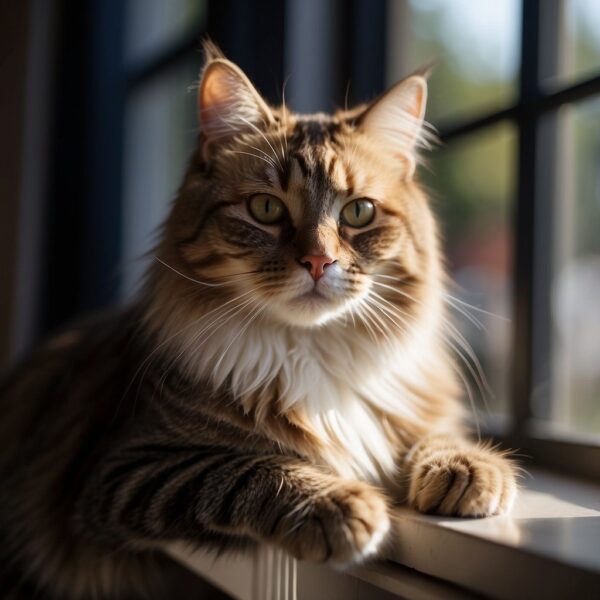
Cat Communication
Feline communication encompasses a variety of behaviors, including vocalizations like meows and purrs, and physical cues such as body posture and contact actions like grooming and rubbing. These methods are key to understanding what cats think and feel.
Language Through Meows and Purrs
Cats utilize a diverse range of meows and purrs to express their needs and emotions. A high-pitched meow can often indicate a greeting or a request for attention, while a low-pitched meow may show displeasure or agitation. Purring is typically associated with contentment and relaxation, but it can also occur when a cat is in pain, serving as a self-soothing mechanism.
- Meows for Communication:
- High-pitched: Greeting, desire for attention
- Low-pitched: Discomfort, complaint
- Purrs and Their Meanings:
- Soft, rhythmic purring: Happiness, contentment
- Purring in different contexts: Pain, healing, or self-soothing
Understanding Feline Body Language
A cat’s body language provides important clues to their emotional state. An upright tail usually signals a friendly disposition, often seen as a sign of affection. In contrast, a tucked tail indicates fear or submission. Ears, whiskers, and eyes also play a role; for instance, dilated pupils may signify excitement or fear, while flattened ears can be a sign of annoyance or aggression.
- Key Body Language Indicators:
- Tail position: Upright (friendly), tucked (fearful)
- Ears: Flattened (aggression), forward (interested)
- Whiskers/Eyes: Forward and spread (curiosity), back/pupils dilated (nervousness or fear)
Grooming and Rubbing as Communication
Felines communicate through grooming and rubbing, which serve to strengthen social bonds and establish territory. When grooming another, it’s a gesture of affection and trust. Rubbing their cheeks against objects or humans transfers their scent, marking territory and creating a familiar environment. These actions reflect a cat’s desire for social interaction and territory establishment.
Cat Behavior in Daily Life
Cats exhibit a spectrum of behaviors in their daily life that are deeply rooted in their natural instincts and domesticated routine. Understanding their feeding and hunting patterns, sleep and rest necessities, as well as their need for play and stimulation, gives insight into their cognitive world.
Feeding and Hunting Patterns
Cats retain a strong instinct to hunt, which manifests in their feeding behavior. They often prefer multiple small meals a day, mimicking the hunting frequency of their ancestors. Domestic felines may not need to hunt for survival, yet they exhibit hunting behaviors through pouncing and playing with their food. Engaging them with food puzzles can satisfy their instinct to solve problems and secure their prey-like food.
- Prefered Food: Small, frequent meals
- Behavior: Mimicking hunting through play
- Problem Solving: Using puzzles to simulate hunting challenges
Sleep and Rest
Cats are known for their love of sleep, often totaling 12-16 hours a day, which is essential for conserving energy for their hunting activities. Their sleep may be deep or merely a light doze, during which they remain alert to their surroundings. This rest allows them to relax thoroughly and refuel for periods of activity.
- Average Sleep: 12-16 hours
- Activity Cycle: Sleep, hunt, eat
Play and Stimulation
Playtime for cats is not merely fun but serves as a simulation of hunting experiences necessary for their well-being. Toys that trigger a cat’s prey drive, such as feathers or lasers, can lead to joyous and fulfilling engagement. Play keeps them both physically and mentally stimulated, helping to prevent boredom and maintain their natural agility.
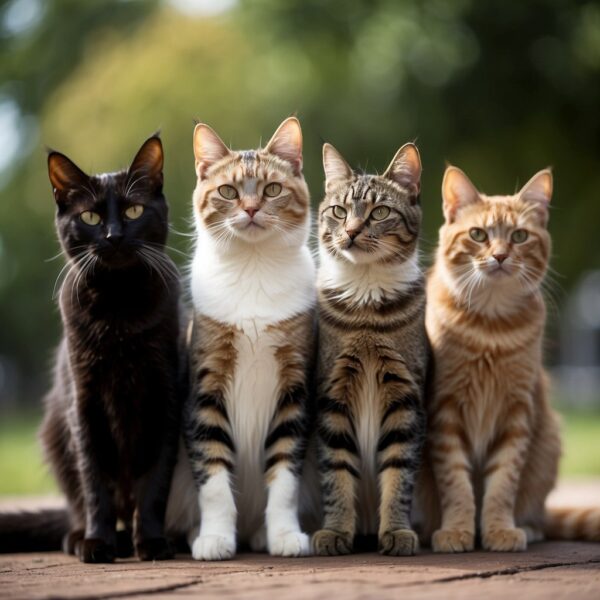
Human-Cat Relationship
The relationship between felines and their human guardians revolves around a unique inter-species bonding, defined by a mix of behavior, emotion, and mutual benefits. This connection is influenced by how much humans understand and cater to their cat’s behavioral cues and needs.
The Special Bond Between Cats and Their guardians
Guardians often experience a strong emotional link with their cats, which is likened to the bonds between human friends or family members. Cats typically display affection through purring, head-bunting, and following their parents around, which are actions that contribute to this bond. Affection flows both ways in the human-cat relationship, with parents showing love through petting, talking, and providing care.
How Cats Perceive Their Human companions
Cats perceive their human guardians as both caregivers and companions. They recognize humans’ ability to provide food, shelter, and safety. Moreover, studies suggest that they can form attachments to their guardians similar to the way children bond with their parents. They use vocalizations like meowing specifically to communicate with humans, indicating a level of social awareness and a perceived unique role for human owners in their lives.
Effects of Separation Anxiety and Reassurance
Separation anxiety can manifest in cats when they are apart from their guardians, leading to excessive meowing, restlessness, or even appetite changes. This anxiety showcases the depth of the cat-guaridian connection and the reliance they can have on their humans for emotional support. Conversely, reassurance through play, attention, and routine can help mitigate these anxious behaviors, reinforcing the security cats find in their human relationships.
Advanced Topics in Feline Behavior
Cats exhibit cognitive abilities that hint at a deeper sense of self-awareness and problem-solving. Their behavior in managing territories and hunting skills displays a level of intelligence and adaptability that is often understated.
Self-Awareness and Problem-Solving
Researchers have observed that cats are capable of complex problem-solving and show signs of self-awareness. Felines demonstrate intelligence in their ability to navigate obstacles and solve puzzles to reach a goal, such as obtaining food from a challenging dispenser. Their behavior indicates a cognitive map of their environment and an understanding of cause and effect.
- Memory: Cats have shown the ability to remember the location of items and use past experiences to inform future actions.
- Learning: Through trial and error, felines learn the most effective ways to interact with different objects and their human companions.
Territory and Hunting Skills
Cats are territorial animals, often marking their domain with scent or urine marking to signal ownership and ward off rivals.
- Territory Management: They possess an innate understanding of their territorial boundaries, which they patrol with regularity.
- Hunting Prowess: Hunting is a significant part of a their behavior, showcasing their ability to stalk, pounce, and make kills efficiently. Even domestic cats retain these skills, as observed in their play and interactions with prey toys or actual prey.
- Sensory Advantage: With excellent peripheral and night visions, felines are well-equipped for hunting in various light conditions.
Territoriality and hunting are not simply instinctual but also involve learned behaviors and adaptations to their specific environment and prey.
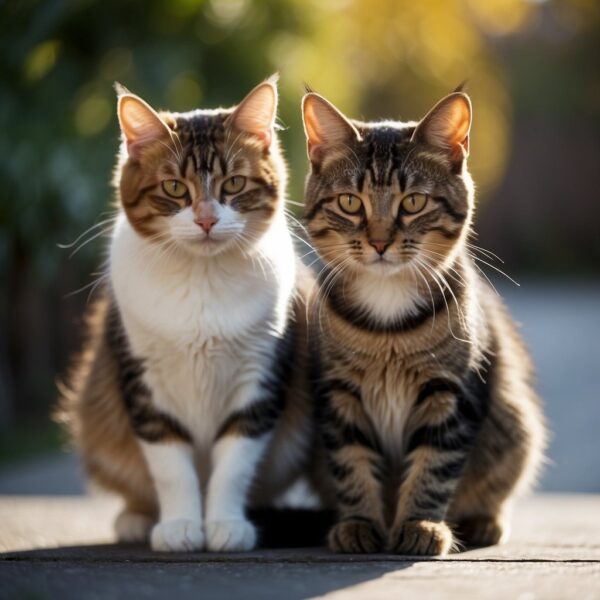
Frequently Asked Questions
In this section, you will find succinct answers to some common inquiries regarding the inner workings of a cat’s mind, providing a glimpse into their distinct cognitive world.
What do cats think about when they just sit there?
When felines appear to be simply sitting and staring, they are often attentively observing their surroundings or focusing on their immediate environment. Their highly developed brains are always processing information, even in moments of stillness.
What do cats think about their Guardians?
Cats think of their guardianss as a source of safety, comfort, and resources. They form attachment bonds and can show affections in various ways, although their expressions are often more subtle than those of dogs.
What do cats think when we kiss them?
Cats do not inherently understand human gestures like kissing. However, they can learn to associate these actions with positive feelings such as affection and warmth if they have repeated positive experiences linked with the action.
How do cats think without language?
Cats think in terms of sensory input and instinctual drives rather than language. They rely on their keen senses and body language to communicate and interpret their environment, processing cognitive tasks intuitively.
Do cats think they are superior to humans?
It is unlikely that cats have the concept of superiority as humans understand it. However, they often exhibit independent behavior and may not display the same kind of social hierarchy cues that dogs use with humans.
What do cats think of dogs?
Cats view dogs based on individual experiences and personalities. A cat’s perception of dogs can range from companionship to rivalry. They may be curious, cautious, or indifferent depending on their past interactions with dogs.